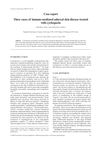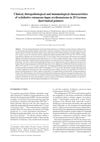Oral Vitamin A as an Adjunct Treatment for Canine Sebaceous Adenitis
May 2011
in “
Veterinary Dermatology
”

TLDR Vitamin A might be a safe extra treatment for dogs with sebaceous adenitis, but more research is needed to prove its effectiveness.
In a retrospective study of 40 dogs with sebaceous adenitis, 24 were treated with oral vitamin A at doses ranging from 380 to 2667 IU/kg/day, with a mean of 1037 IU/kg/day. The dogs, which included various breeds and ranged from 9 months to 12 years old, were treated for at least one month. Twelve owners reported a ≥25% improvement in symptoms such as pruritus, scale, alopecia, and coat quality, while three saw initial improvement followed by regression. Two owners noted a 25-50% improvement due to concurrent topical treatments, and six reported no improvement, leading to discontinuation of vitamin A. One dog developed keratoconjunctivitis sicca after 3 years on a high dose of vitamin A, but no other adverse events were noted. No significant difference in vitamin A dosage was found between dogs that improved and those that did not, and no correlation was found between dosage and treatment response or between the duration of disease or treatment and clinical or histopathological findings. The study concluded that vitamin A may be a safe adjunct treatment for canine sebaceous adenitis, but further research is needed to confirm its efficacy.




